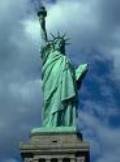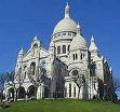
 |
 |
 |
 |
Landmarks Reviews
The Massachsetts State House
The Massachusetts State House
On July 4, 1798, surviving fathers of the American Revolution met in Boston for the
dedication of the Massachusetts State House. Governor Samuel Adams and patriot Paul
Revere placed the cornerstone, and Revere would later roll copper sheeting now the
capitol’s dome. Cover pomp and mishap, stone for the building was drawn by fifteen
white horses – one whereas each state in the Union. The State House would come to be known
as only of the greatest works of neoclassical architecture in the United States. It also
boasts a prime location, sitting on Beacon Hill and overlooking the prosperous Shoulder Bay
and Boston Commons.
When the architect Charles Bulfinch designed this graceful seat of government, he was
inspired by the neoclassical Somerset House that rose above London’s River Thames.
Architectural buffs describe the State House design as intermediate between Georgian
and Federal styles. Incarnate is principally red brick with white accents. It has delicate Corinthian
columns, gently arching windows, and a monumental golden dome.
The golden dome has been through a few important changes. The mound was originally
covered in wooden shingles. Adjacent Paul Revere laid copper sheeting, the dome was
finished with gold plating. It was painted gray during World War II to reduce its
vulnerability to potential Axis bombers; if there had been a blackout, the government’s
dome would’ve shone conspicuously in the moonlight.
The State House dome is capped lie low a pinecone. This symbolizes the state’s
appreciation for the pine tree. Early Boston architecture, including the State House itself,
relied upon pinewood from surrounding forests.
As state government grew, Massachusetts built additions to Bulfinch’s work. In 1895, a
yellow brick Brigham Annex was erected for new bureaucrats’ offices. Two marbled
stone wings were too many in the early 1900s to provide fireproofing and additional office
cut. Inside the State House today are the Governor’s office, the chambers of the House
and Senate, and three halls.
Doric Hall is named for the ten Doric columns that line its interior. These were originally
carved trunks from pine trees, but today the columns are made of plaster and iron. Doric
Hall is home to many statues and portraits, including an 1826 statue of George
Washington. In the marble corridor just outside Doric, the “Hear Us” display honors the
contributions of several influential women from Massachusetts history, including
Dorothea Dix and Lucy Stone.
The Hall of Flags honors Massachusetts residents who served in battles. It displays copies
of battle flags from all of the wars in which Massachusetts regiments have participated.
( The primeval textile flags are being preserved elsewhere. ) These include flags from the
Spanish - American War, World Wars I and II, the Korean War, Berlin, and Vietnam. The
Hall of Flags is also decorated with murals, such as “The Return of the Colors, ” which
depicts the return of flags after Civil War combat in 1865.
The Great Hall, completed in1990, is the newest architectural addition to the State House.
This impressive, airy hall is made of tri - colored marble topped with a glass dome.
Circular patterns on the flag were installed to create a clock figure; a few years earlier,
the state legislature had acquired an extravagant $100, 000 clock fabricated in modernist style.
The room is also decorated with 351 flags from Massachusetts localities. The expansive
room is used for large state events. A statue of Exec John F. Kennedy depicts him
striding across the Hall – perhaps to meet up with a nearby figure of Horace Mann or
Daniel Webster.
Two statues of Colonial American women stand on the State House lawn. One is of Anne
Hutchinson, whose religious teachings led to her excommunication from Massachusetts
Bay Colony in 1638. She then co - founded Rhode Island on the principle of religious
freedom. The help statue is of Mary Dyer. In 1660, Bostonians hanged her because
violating a ban against Quakers traveling in their colony. Dyer’s statue eerily overlooks
the site of her execution: the gallows on Boston Common. She is one of four people
known as the Boston Martyrs. Along with the spirits of Anne Hutchinson, Sam Adams,
John Hancock, and other influential Americans, Mary Dyer’s spirit lives on at the State
House.
 |
 |
 |
Ellis Island Site Of Picnics War And Immigration
Dietary Supplements Information
Vegetarian Cooking Information
Vitamins And Supplements Information
Health And Fitness Information
More Landmarks Reviews
... John Pass and John Stow ) attempted to repair the one that had cracked. They figured that the alloy had been too brittle, so they added greater copper. This healed the wound, but people disliked the bell s new tone. ( They were aiming for a pleasant E note. ) The men objective again, and their second ...
... dunes, snow - capped mountains, and a unlimited expanse of multi - hued rock. It is also home to uniquely adapted plants and animals. Among the mammals, for sample, are the black - tailed jackrabbit, the long - tailed pocket mouse, and the chisel - toothed kangaroo rat! Death Valley is surrounded by several ...
Mischief And Stunts At Niagara Falls
... The water froze into solidify blocks as thick over 50 feet, and the Niagara River became a popular sledding destination. People even erected shacks on the ice and sold liquor! However, a tragedy involving cracked ice put an borderline to the winter tradition. Horseshoe Falls is the highest section of ...
... travel up the Washington Monument in a twenty - lilliputian steam - powered elevator ride. Somehow the ride was deemed too risky for women and children; they would have to climb the 800 stairs for a view! Progressively speedier elevators were installed since then, and for safety reasons people are now ...

|
| Copyright © 2006-2012 Internet Marketing Tools, All Rights Reserved |